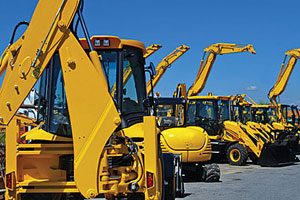
|
While the bitter reckoning of the winter months has recently displayed a scattering of warm spots indicating a better spring ahead, mid-January economic improvements also are peeking through the heavy clouds overhanging the late 2012 economy.
Despite the double whammy of the year-end fiscal cliff and the threatening debt-ceiling crisis this month, the world-leading U.S. economy is straining at government shackles the way Gulliver was held down by the vast array of Lilliputians.
Significantly, mid-January statistics have surprised with an impressive reduction of new jobless claims, while 2012’s final month celebrated a 12.4% increase in housing starts over November. This brought new residential construction inception to its highest level since just before the mid-2008 financial crash. The number of job openings also increased, as did a reduction of those vying for available job opportunities.
The best news of all, however, was voiced by leading energy sector executives at the departure of EPA czarina Lisa Jackson, who had clasped an iron grip over the energy expansion the U.S. is on the verge of unleashing. While the nature of her sudden departure is clouded in a fog of cover-up, typical of the Beltway information management system, suffice it to say the reaction of the energy sector’s movers and shakers was ecstatic. This does not give the energy industry a free hand, as it shouldn’t. Instead, the transitional EPA leadership is expected to be more rational in its enforcement of the 144 new regulations waiting to be thrust on the pursuit of hydraulic fracking and other fossil fuel initiatives.
Jackson’s outlandish threats, which included bankrupting coal and expanding the usage of heavily-subsidized renewables such as wind, solar, geothermal and ethanol, hopefully will now have to stand the test of economic viability.
Even President Obama, the most outspoken advocate of renewables, is realizing the fossil fuels of oil and natural gas provide the best opportunity to put construction workers back on the job. This will accelerate revenue generation with which to cut the deficit and slow the U.S. Treasury debt from further runaway expansion.
Also, as all second-term presidents have eventually realized, their historical legacy is primarily based on the nation’s overall well-being at the time of their White House departure. Based on historians who have access to the president, this “legacy” has become a major driving force for future historical analysts.
While expectations of political bipartisanship may be a forlorn hope, the eventual well-being of our nation on both the domestic and international fronts will provide the eventual measuring stick by which the presidential second-term performance will be measured.
Brand-name identification
As America’s turgid economic recovery keeps plugging along, it comes as no surprise that in every business/industry subsector there are a handful of companies that do disproportionately well. This is due to brand-name identification, which allows these business units to fare far better than their competition even in the worst times. As such, severe recessionary periods always will manifest in a capitalist system. A superior brand name always has been the best insurance to prevent economic disaster, even in the most troublesome of times.
Although superior brand names normally are associated with such high-style consumer products as men’s and women’s fashions or wears, automotive usage and food products, brand-name identification is becoming an increasingly important factor in industrial products. Since the heavy-duty industrial sector has been the last bastion of holdout when it comes to the need for advertising, public relations and sales promotion, the underpinning of successful brand-name amplification, even in this hard-nosed sector, is starting to embrace such belief systems.
Having been a lifelong business devotee of brand-name identification as a logical tool for building recognition for deserving product lines and companies, I used this technique within the $50 billion pipe, valves and fittings sector to take a tiny ($2.5 million per annum) plumbing brass producer in 1960 and transform it into a $120 million in annual revenues valve industry giant before transitioning into other challenges in the mid-1980s.
The current demand economy makes respected identification even more critical than ever before in those businesses best qualified to resolve such problems as product quality under stressful conditions, just-in-time service and reasonable competitiveness. These businesses are coming forth as industry leaders no matter how obscure they may seem to the population at large.
This already is proving itself to companies I consult in that their revenues and profits are running well ahead of their particular subsector’s average. Getting out a brand-name message amplifies company stature that possesses a combination of the previously indicated advantages.
Industrial businesses, especially those which must steer their organizations more carefully than ever through a combination of quality hazards, tightening of government regulation and uninhibited foreign competition, will find that projecting an outstanding message to customers and prospects alike will put them well ahead of their competitors. It opens the gap with those who have not embraced this concept, which must be based on the valid bedrock of performance.
Permanent U.S. trade surplus?
While economic observers’ attention has increasingly been riveted on the seemingly uncontrollable annual national $1 trillion-plus deficit and the $16-trillion-plus Treasury debt, little note has been given to the shrinking “current account deficit.” This unfamiliar term encompasses the quarter-annual imbalance caused by the negative impact of all goods and services imported vs. those exported – unlike the monthly trade deficit, which is a more narrow measure not including currency exchanges.
Prior to the outbreak of the recent Great Recession, the monthly trade deficit was averaging $75 billion a month with a growth momentum indicating an annual $1 trillion deficit in the upcoming few years. With 20% of this amount tied up in energy imports from OPEC nations and the imbalance of trade with China out of whack and growing worse, it was only a question of how fast and how prodigious this growth could become in the current decade.
But in the wake of the worst global financial debacle since the 1930s depression, the monthly trade deficit has been in a state of reversal with 50% shrinkage of the quarter-annual current account deficit in sight. Projecting this trend to 2020, a trade surplus not seen since the early 1950s is a distinct possibility for the following reasons:
- Energy: Due to a combination of a 10% decrease in national demand and a massive surge in crude oil and natural gas production, this largest-of-all overseas trade deficit components has almost been cut in half. The additional benefits of energy imports from NAFTA partners Canada and Mexico make OPEC dependence increasingly less voluminous.
- The China factor: Although imports from China, which include goods flowing from relocated U.S. plants, have not substantially lessened, Beijing’s greater focus on internal development has significantly decreased its lopsided export/import margin. U.S. transportation equipment such as planes and cars, heavy construction and agricultural machinery, and consumer goods are making an increasing dent in the near 10-to-1 import/export ratio that once existed.
- Insourcing: As once outgoing displacement of U.S. manufacturing facilities have started to trickle back to the homeland, many manufactured goods are appearing from revamped American sites. With wages, transportation and industry cost levels shrinking in America’s favor, this is certain to remain a continuing trend.
- Foreign currency influx: While once limited to the purchase of U.S. Treasury debt or the stock market for the past decade, multi-trillion-dollar foreign surpluses are now focused on purchases of American fixed assets such as residential and commercial buildings. This trend is only beginning and indicates future flood-tide proportions on a broad range of assets.
- Services: Whether it’s tourism, entertainment, general consultancy, legal services or advertising/public relations, the U.S. is still the most sought-after for these non-industrial/agricultural money makers. Despite disputes regarding U.S. intellectual property rights, there is no seeming slowdown in this growth.
When looking ahead to the end of this decade, these factors make it a better-than-even bet the U.S. will be in the realm of a solid surplus by 2020.




